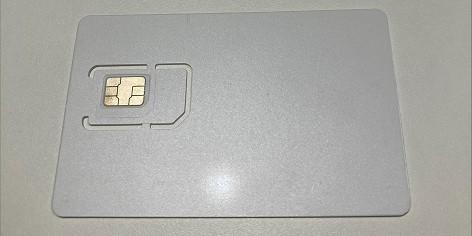
Connect SIM by macnica
ConnectSIM by Macnica
What is a chip SIM? What are the advantages and disadvantages?
Introduction
When using a smartphone / mobile phone or tablet, you will often come across the word "SIM," such as SIM-free, low-cost SIM, data SIM, and nanoSIM.
Although it's something we all know, the "SIM" is currently undergoing an evolution from a card-shaped device to a semiconductor component, and that's what we'll be talking about today.
Difference between SIM card and chip SIM
To put it simply, a SIM is a memory that contains the information necessary for communication.
A more accurate description would be "a smart card that records contract information with a telecommunications carrier, authentication keys, and other information, and is equipped with the security functions necessary for a mobile device to connect to a mobile network."
The difference is whether this important role in communication is carried out in a plastic SIM card or in a chip SIM, which is an electronic component.
Many people are probably familiar with the appearance of a SIM card, which has a row of gold terminals in the center and one of the four corners cut at an angle.
There are three sizes, from largest to smallest: standard SIM, microSIM, and nanoSIM. If the size does not fit, it will not fit into the device socket, so be careful.

In contrast, Chip SIMs use a package familiar to electrical design engineers (MFF2, a package similar to DFN8) and are small, leadless, surface-mount electronic components.
Will chip SIMs become mainstream in the future?
Card SIMs and chip SIMs each have their own advantages and disadvantages, so I think they will coexist equally well for the time being.
It's difficult to choose without understanding the advantages and disadvantages of each, so from here on we'll introduce you to our thoughts on the pros and cons.
A classic comparison of SIM cards and chip SIMs
When we talk to users who are considering adopting chip SIMs, their main expectations for chip SIMs are related to "reliability," which is difficult to achieve with SIM cards.
SIM cards are physically inserted into a device's SIM slot or connector, which poses challenges to mechanical reliability, such as poor contact, wear from insertion and removal, and misalignment of terminals due to vibration and shock.
In particular, installing it in equipment that is subject to a lot of vibration may cause communication problems.
In contrast, chip SIMs are surface-mounted semiconductor components, making them more resistant to external factors such as vibration and humidity.
As for operating temperatures, as long as it can handle up to +85 °C, it will be no problem for most devices.
In applications that require strict specifications, such as industrial or automotive use, the compromise of using SIM cards up until now has been to replace them with chip SIMs, and improvements in product quality are expected.
|
|
SIM Card |
Chip SIM |
|
Implementation |
Slots / Connectors |
surface mount |
|
operating temperature |
-20 ~ 85℃ |
-40 ~ 105℃ |
|
lifespan |
about 10 years |
about 15 years |
Comparisons that are hard to reveal ①
First, let's talk about the contract. Since the SIM card can be physically removed and inserted, it is (basically) possible to switch carriers.
It is also possible to use SIM cards from different telecommunications carriers, such as this device using a SIM card from company D and this device using a SIM card from company K.
In contrast, with a chip SIM, you decide on a carrier, purchase a chip SIM with that carrier's profile written on it, and then install and use it, so (basically at the moment) it is not possible to switch carriers.
Standards are being developed in a way that will make this feasible, so it is expected that these restrictions will be relaxed in the future.
Comparisons that are hard to reveal ②
The SIM card is inserted into a SIM slot or SIM connector.
From the perspective of designing the device's housing, there are constraints such as where to make the openings and how to waterproof it.
By using chip SIMs, there are fewer restrictions on the design of the housing, and costs can also be optimized.
Summary
For these reasons, card SIMs and chip SIMs each have their own advantages and disadvantages.
Therefore, when choosing which SIM to use, it is important to comprehensively consider the characteristics of the application to be used, the installation environment, operation period, maintainability, etc., and then select the most suitable SIM format.
Selection based on purpose and conditions is the key to improving communication stability and equipment reliability.
Click here for more
About Connect SIM by macnica
Connect SIM by macnica is a communication service for IIoT (Industrial IoT) provided by Macnica.
We also offer the chip SIM introduced in this article, and have a solid support system in place for semiconductors.
We offer customized communication plans using NTT Docomo lines and multi-carrier SIM cards to suit your needs.
We contribute to optimizing communication costs by proposing flexible communication plans that suit our customers' usage.
We also provide samples for verification free of charge, so please feel free to contact us.
